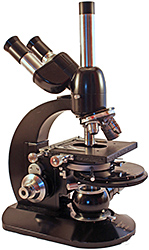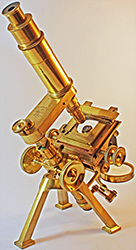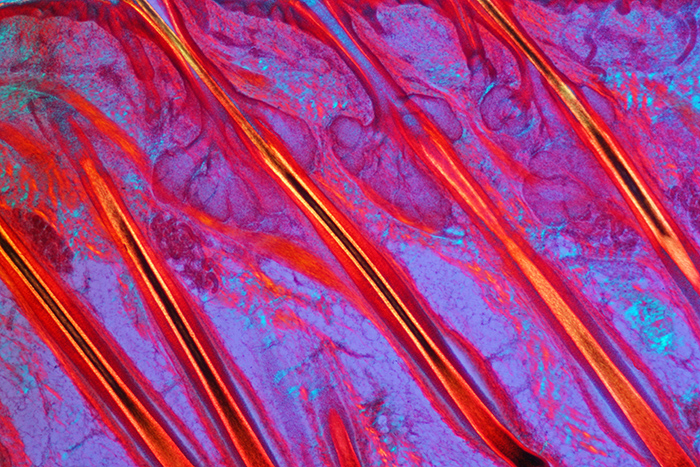Why amateur microscopy?
The microscope reveals an amazing hidden world that can provide several lifetimes of interest. Starting as an amateur microscopist costs very little, and requires no previous skill or experience. However, many amateur scientists armed with a microscope make important scientific contributions, and are able to study many areas for which professional scientists struggle to get grant funding. The list of what you can look at is endless: pond and marine life, insects, plants, fungi, pollen and spores, rocks and minerals, crystals and more.
 Good quality microscopes for the amateur can be bought at relatively low cost, either new or second-hand – although it is possible to spend much greater sums if you wish! Top quality research grade microscopes from the 1960’s and 70’s that would have cost several thousand pounds when new can now be bought (often via Internet auction sites or Quekett Club sales) for a few hundred pounds. There are several different types of microscope, depending on what you want to look at. For those studying entomology a low-power stereomicroscope may be best, while anyone wanting to look at the amazing diversity of pond life will need a high-power compound microscope. Amateur geologists will need a special polarising microscope. The Quekett Club can help you chose which type of instrument is best for your needs.
Good quality microscopes for the amateur can be bought at relatively low cost, either new or second-hand – although it is possible to spend much greater sums if you wish! Top quality research grade microscopes from the 1960’s and 70’s that would have cost several thousand pounds when new can now be bought (often via Internet auction sites or Quekett Club sales) for a few hundred pounds. There are several different types of microscope, depending on what you want to look at. For those studying entomology a low-power stereomicroscope may be best, while anyone wanting to look at the amazing diversity of pond life will need a high-power compound microscope. Amateur geologists will need a special polarising microscope. The Quekett Club can help you chose which type of instrument is best for your needs.
The microscope is used as an essential tool in many other fields, including nature study, botany, beekeeping, biology and geology. Understanding how the microscope works, and how to get the best images from your instruments, adds another dimension to your hobby and ensures that you achieve the best possible results and pleasure.
 Collecting antique microscopes and slides is another dimension of amateur microscopy that attracts collectors and historians. The microscope was first invented nearly 400 years ago; many variants have been produced over that time. The heyday of microscope development was in the Victorian era, when superbly engineered brass microscopes were produced for demanding (and often wealthy) Victorian gentlemen. At the same time, an industry developed making microscope slides of a huge diversity of subjects, of a quality that has not since been surpassed. These microscopes, their accessories and the mounted microscope slides now make a fascinating field for the collector and user alike.
Collecting antique microscopes and slides is another dimension of amateur microscopy that attracts collectors and historians. The microscope was first invented nearly 400 years ago; many variants have been produced over that time. The heyday of microscope development was in the Victorian era, when superbly engineered brass microscopes were produced for demanding (and often wealthy) Victorian gentlemen. At the same time, an industry developed making microscope slides of a huge diversity of subjects, of a quality that has not since been surpassed. These microscopes, their accessories and the mounted microscope slides now make a fascinating field for the collector and user alike.
For the photographer, the microscope is a gateway to a new world of photographic images, with amazing structures and colouration. Digital cameras can be coupled to suitable microscopes and pictures easily taken, although top-quality results require skill and experience. Several competitions are held each year specifically for photomicrographs (photographs taken through the microscope) and are often won by amateur photomicrographers, often using simple or second-hand equipment. Specialist software for amateurs is also now available at low cost to merge multiple exposures taken through the microscope; stunning images can be created.

For children, the microscope is often a source of inspiration that ultimately leads to a career in science; many professional scientists were first inspired through a childhood microscope. Microscopes for children are available at very low cost and generally can be used safely without adult supervision; our page on Microscopes for Children provides some guidance on what microscope to buy, and what specimens to look at.
Finally, amateur microscopy can be a very sociable hobby, with the Quekett Microscopical Club and other clubs holding meetings on a regular basis, and through Internet forums. Start in amateur microscopy today – you won’t be disappointed!

